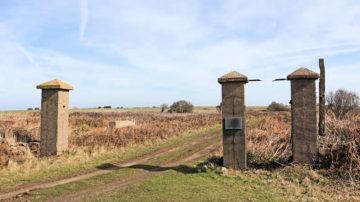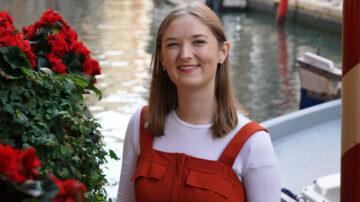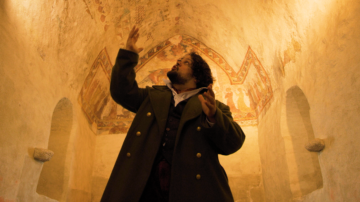A two-thousand-year-old treasure trove, which was discovered by two Jersey detectorists in 2012 in a field in Grouville, has been purchased by the Government of Jersey on behalf of the Island.
The Le Câtillon II Coin Hoard treasure trove includes:
- the world’s largest ever Celtic coin hoard, with almost 70,000 coins from the Coriosolitae, Osismii, Redones and Baiocasses tribes, and additional coins minted in southern Britain in around 40 BC
- Europe’s largest ever collection of torque neck rings
- a fabric bag full of gold and silver jewellery and ingots
- flora and fauna, including millipedes, centipedes and other arthropods which fell into the pit where the Hoard was buried 2,000 years ago.
In accordance with Jersey customary law, the treasure trove became property of the Crown when it was found and negotiations have been under way between Government and HM Receiver General, Alan Blair, who has represented the Crown and the finders.
A final sum of £4,250,000, including a previous interim payment of £737,000, has been agreed by the Council of Ministers, and the transaction was completed on Friday 17th December 2021 using the Civil Asset Recovery Fund.
What is the Celtic Coin Hoard?
The Celtic Hoard discovered by two local detectorists in a field in Grouville in June 2012 was claimed by the Crown as treasure trove in accordance with Jersey customary law.
The Hoard, which is the largest of its kind in the world, comprises over 70,000 coins along with many important items of gold and silver jewellery, torques and ingots which date back more than two thousand years.
The Crown can now confirm that the sale of the entire Hoard to the Government of Jersey has been completed.
The total consideration paid by the Government to the Crown for the purchase of the Hoard is £4,250,000. This includes an amount of £250,000 paid to Jersey Heritage to disaggregate the Hoard, which was necessary to establish all the components that comprise it. It also includes a further amount of £250,000 to be used by the Crown for the establishment of a trust with the purpose of promoting scientific and educational research into the Hoard.
In the absence of any Jersey legislation relating to treasure trove, all the interested parties – the Crown, Government and finders – agreed to follow the spirt of the procedures laid out in the Code of Practice (second revision) to the UK Treasure Act 1996 (“the Code”) to establish its value.
In October 2017, the first valuation of the disaggregated Hoard was provided by the UK Treasure Valuation Committee (TVC), the body which provides recommendations of valuation in accordance with paragraph 65 of the Code, which valued the Hoard at approximately £2 million.
Paragraph 67 of the Code provides that interested parties (including finders) have the right to submit their own valuations and evidence, and accordingly the Crown agreed that the finders should be able to submit a valuation also. In February 2019, the finders’ valuation was received by the Crown in the form of an 800-page report with input from 19 experts, which valued the Hoard at £6,094,775.
In view of the difference between the TVC’s and the finders’ valuations, at the suggestion of the TVC and in accordance with the Code, the Crown sought an additional opinion from a French valuer with substantial experience in selling the types of coins concerned. The French valuer agreed with the finders’ valuation figure of £6,094,775 but on the basis that the Hoard was sold in separate lots rather than as a whole.
The Crown and the Government of Jersey have therefore agreed to an overall valuation figure of £4,250,000 which reflects a substantial discount of over £1.8 million from the finders’ valuation, as the Hoard is being purchased as a whole and not in separate lots. In accordance with Jersey customary law the finders will receive an ex gratia payment from the Crown. The finders have also agreed with and support the establishment of a trust in relation to the Hoard.
Given the differences of valuation, all parties consider the price paid to be fair and reasonable. Whilst a much higher price could have been obtained in the current strong international market for antiquities, the Crown considers that it is vital for the Hoard to remain in Jersey for current and future generations to enjoy and study. The Hoard represents the most important historical collection of items remaining from Jersey’s rich cultural history.
The Chief Minister, Senator John Le Fondré, said: “This is an outcome which will ensure that this unique part of Jersey’s history remains in the Island for this and future generations. Since its discovery nine years ago, Jersey Heritage conservators, archaeologists and volunteers have unpicked and studied the hoard, but there is still much that it can reveal about Jersey and our place in the world at the time of Christ.
“Had it been decided to split the hoard into its component parts for sale to the highest bidders, considerably more money could have been raised and the treasure trove would have been dispersed across the world and its inherent value to Jersey lost. The Crown was under no obligation to sell to the Island and, although it has taken time, we have reached an agreement which satisfies the interests of the finders, the Crown and the Island.”
The final financial settlement includes £250,000 which was paid to Jersey Heritage for their work disaggregating the treasure trove to determine its contents, and an additional £250,000 which will be used to establish a trust.
The Receiver General said: “All parties have agreed that the establishment of a trust will ensure that the coin hoard can be enjoyed and studied by future generations. The Crown will undertake the work needed to establish an independent trust, the purpose of which will be to promote scientific and educational research into the hoard.”
The Minister for Treasury and Resources, Deputy Susie Pinel, said: “I think all Islanders will welcome the news that this internationally-significant piece of our history will stay in Jersey. I regard it as appropriate that money from the Civil Asset Recovery Fund is used to settle its future.”














